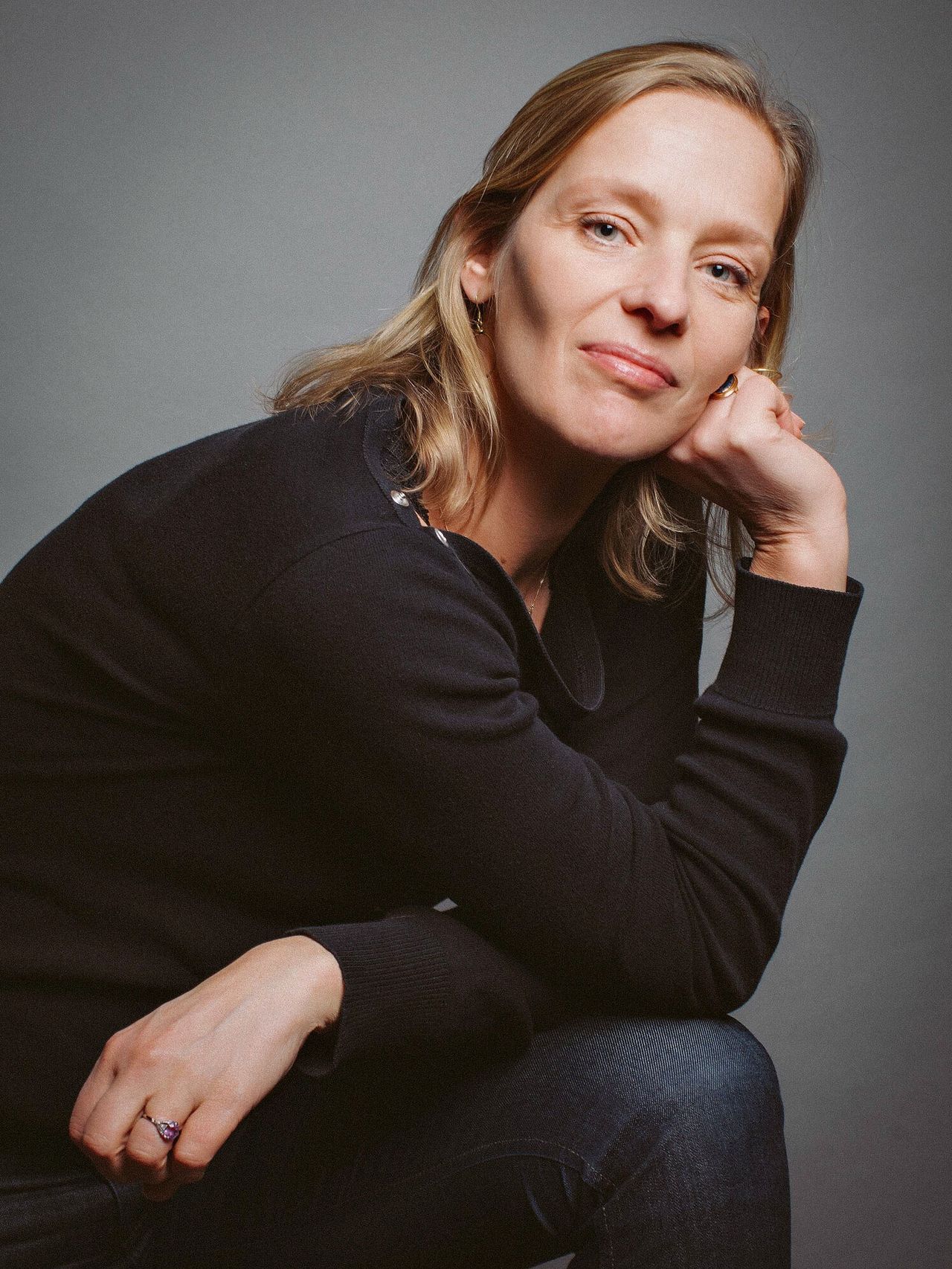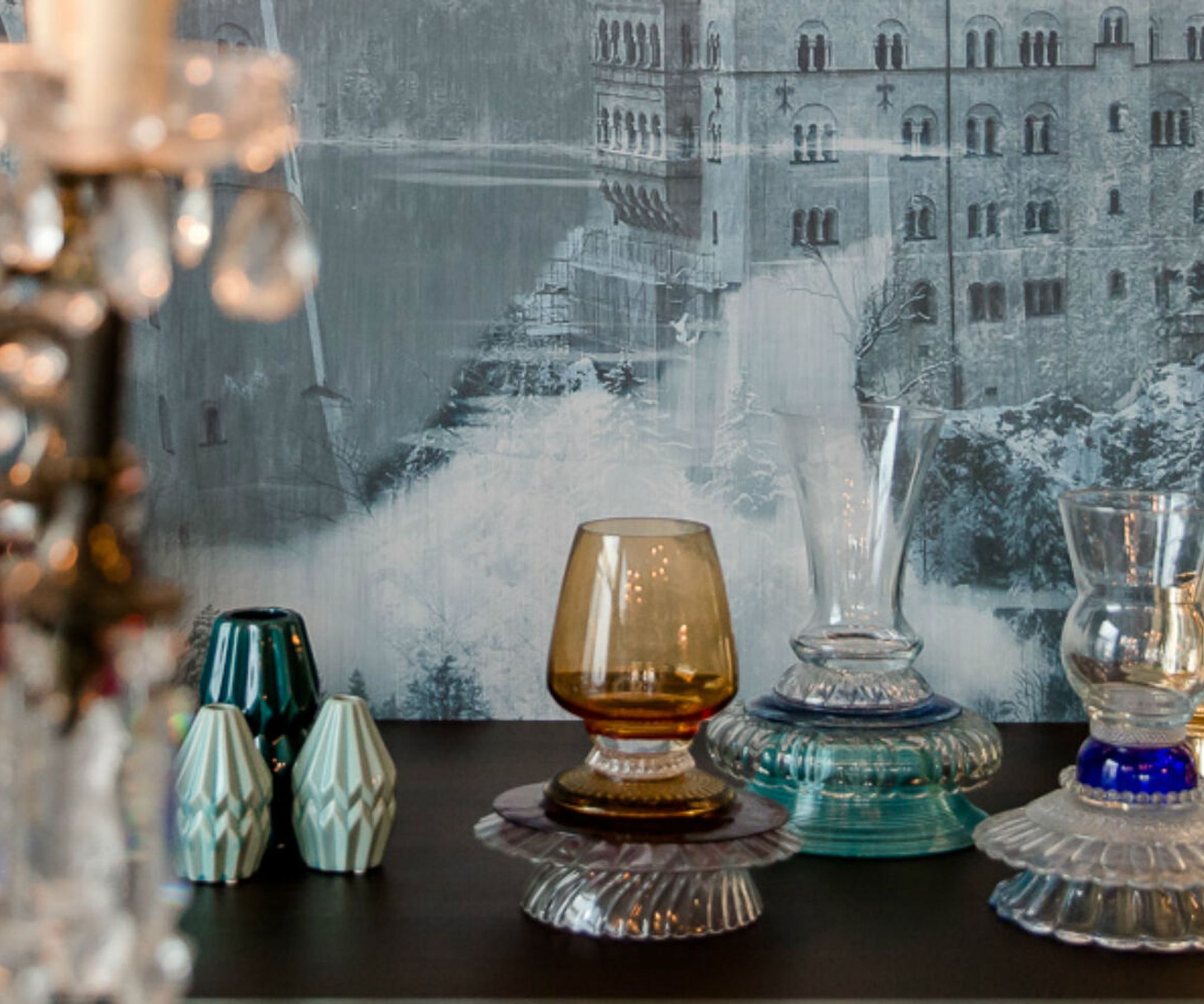Raise your glasses!
She's particularly taken with glass, though ceramics, wood and silicon are also part of her palette. But for Dutch designer Roos Kalff, the aim is always the same: she turns the form and functions of original objects into something new, linking the past to the present. Her reinterpretations of vintage designs embody the concept of sustainability at its most beautiful. She has showcased her artistic talent at Motel One Munich Sendlinger-Tor.
Delicate glass creations make for eyecatching decor, while her ‘Louis 2015’ table design – a playful combination of ceramic legs and carefully laid wooden board – is the ideal workstation. All of her pieces, whether big or small, are unique, individually selected and hand-made. Today Kalff, who originally trained as an art teacher, has her own business, Studio Kalff, in Amsterdam. She also enjoys success as one half of design duo DeJongeKalff.10 questions for... Roos Kalff

Ms Kalff, what distinguishes good design?
In hindsight, all good design looks like every decision that led to the final product was evident and logical. Which of course is absolutely not the case when you are in theconcept and development phase.
Do you have a design principle?
No not really, I just try and trust my instincts. If it doesn’t fit, don’t force it
Where do you find the many glasses for your works?
I find them all over the place at vintage shops and antique auctions. I’m constantly on the lookout for special pieces that have no meaning to their previous owners but that can inspire me to make something new.
If you didn’t work with glass, what material would you work with?
I work with different materials, not just glass, also porcelain, wood and silicone rubber. I like it when the materials lead me to the design. An idea executed with different materials could ultimately turn into a different product. The relief in the silicone tablecloth that I made for Droog Design and the Rijksmuseum in Amsterdam has shades like a damask tablecloth. It’s the properties of silicone that make that happen.
You play with time. What does time mean to you?
My work fits ’in between times‘, I like the thought that it’s not easy to place it in a time or put a label on it. By using vintage glass I give new shape and function to it. In a sense, my work bridges past and present.
My design principle: If it doesn't fit, don't force it!
Roos Kalff

Which historical figure influences you?
I prefer to look at painters and artists for inspiration. The functional aspect of my work is just one aspect of my designs and sometimes I even skip that entirely. I’m a huge fan of Francis Bacon if I must name someone.
Which living person influences you?
I really love Antonio Marras’ work and his shop in Milan. I discovered it when I was at the Salone di Mobile last year. The amazing attention to detail in his collection of designs and the objects is truly inspiring. I am also a huge fan of Vincenzo de Cotiis. His designs are also not only functional but can also be viewed as autonomous works of art.
What is your greatest dream?
That 150 years from now my work will inspire someone to design something that will fit in his or her time.
A wonderful compliment for your work?
When I presented my ‘Droplets’ at the Salone di Mobile in Milan a lot of people asked me if the glass I use was Murano glass. That was a great compliment to hear, especially at a place like that.
What is your magic formula?
I trust in my intuition while working on my designs and try to keep an open mind.

STUDIO KALFF
Zamenhofstraat 150 / unit 318
1022 AG Amsterdam, NL
+31 (0)6 22 66 0992
info@studiokalff.com

